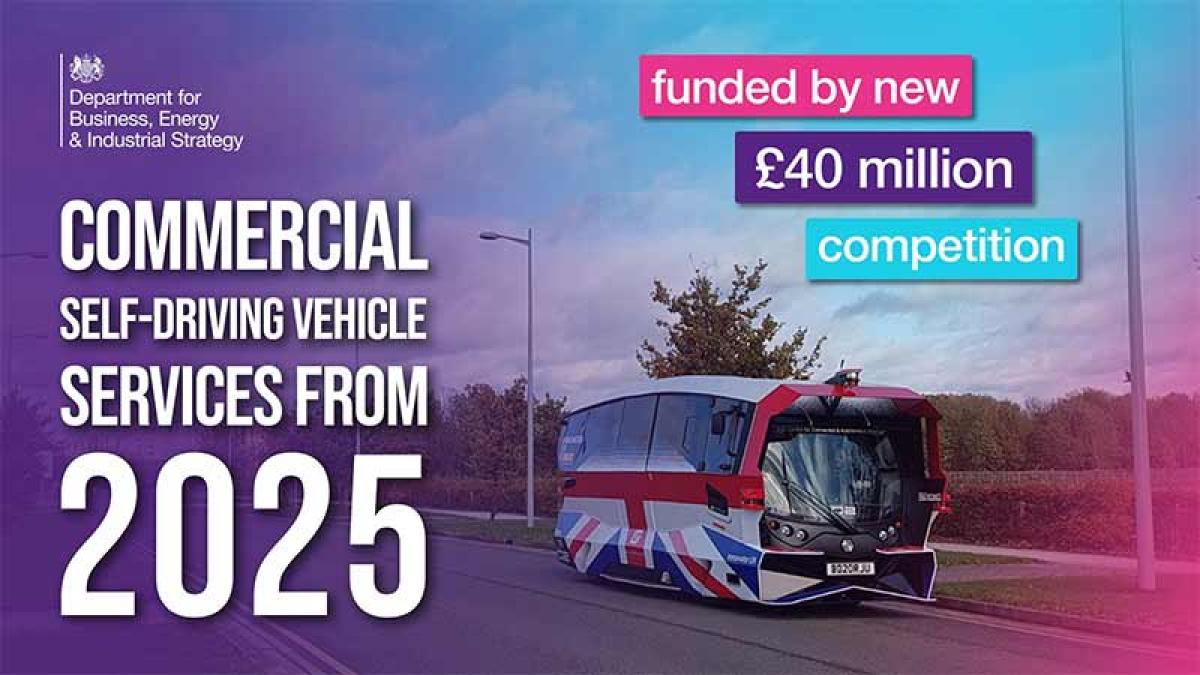Commercialising Connected and Automated Mobility

New £40 million competition to kick-start commercial self-driving services, such as delivery vehicles and passenger shuttles
The Commercialising Connected and Automated Mobility competition is providing grants to help roll out commercial use self-driving vehicles across the UK from 2025, delivering convenience for consumers and making journeys safer, greener and more reliable.
The competition will help bring together companies and investors so that sustainable business models to be rolled out nationally and exported globally.
Types of self-driving vehicles that could be deployed include delivery vans, passenger buses, shuttles and pods, as well as vehicles that move people and luggage at airports and containers at shipping ports.
Innovate UK, part of UK Research and Innovation, will work with the Centre for Connected and Autonomous Vehicles (CCAV) to invest up to £41.5 million in innovation projects across two competition strands, which will both close to applications at 11:00 on 20 July 2022.
Strand 1: Commercialising Connected and Automated Mobility: Deployments
In strand 1 of the competition, your proposal must target early commercial self-driving vehicle opportunities and support the UK supply chain to grow and fill technology gaps necessary for their deployment.
Up to £40 million to fund industrial research and experimental development projects has been allocated in this strand.
Your project must focus on one or more of the following four listed options in commercial connected and automated mobility deployments:
Logistics services:
- in public spaces to which the public have access
- in private spaces to which the public do not have access
Passenger services:
- in public spaces to which the public have access
- in private spaces to which the public do not have access
Find out more about Strand 1 and apply now.
Strand 2: Connected and Automated Mobility: Mass Transit
In strand 2 of the competition, your proposal must identify applications and quantify the real-life potential of Connected and Automated Mobility (CAM) as a mass transit solution.
Up to £1.5 million to fund feasibility study projects has been allocated in this strand.
Your project must identify a new application for CAM as a mass transit solution on a segregated route and quantify the real-life potential of a suitable solution.
Your proposed automated vehicle services must be on physically segregated infrastructure: routes that are not open to public access: for vehicles, pedestrians, cyclists and other road users. This can include for example, tracks, disused railway routes.
Your proposal must:
- consider the utilisation of new CAM technologies for innovative mass transit services on segregated infrastructure, including both new and disused infrastructure, or infrastructure that would otherwise require a significant upgrade
- propose the design, delivery, and operational cases for the introduction of a service on a specific, UK route currently underserved by public transport, including how it could be practically delivered and operated as part of an integrated public transport network.
- solve real-life transport problems and focus on areas and routes in the UK that are currently underserved by public transport, particularly areas where traditional rail services are not deemed viable
- set out why an automated vehicle service would provide better outcomes than traditional mass transit modes, for example, heavy and light rail, tram and bus, including guided busways
- consider how a service could be improved or expanded in the future, for example, as technology develops and legislation enables the use of automated vehicles on public roads
Find out more about Strand 2 and apply now.
First published 24 May 2022